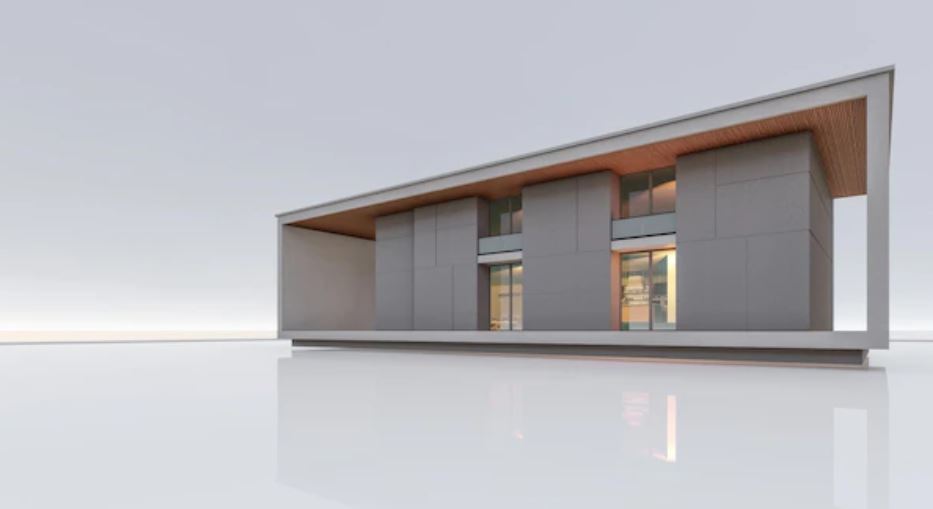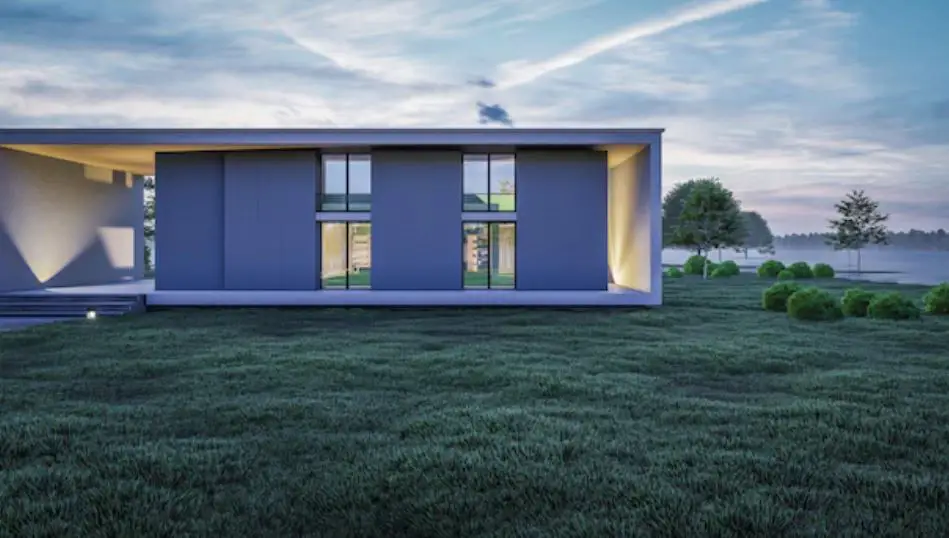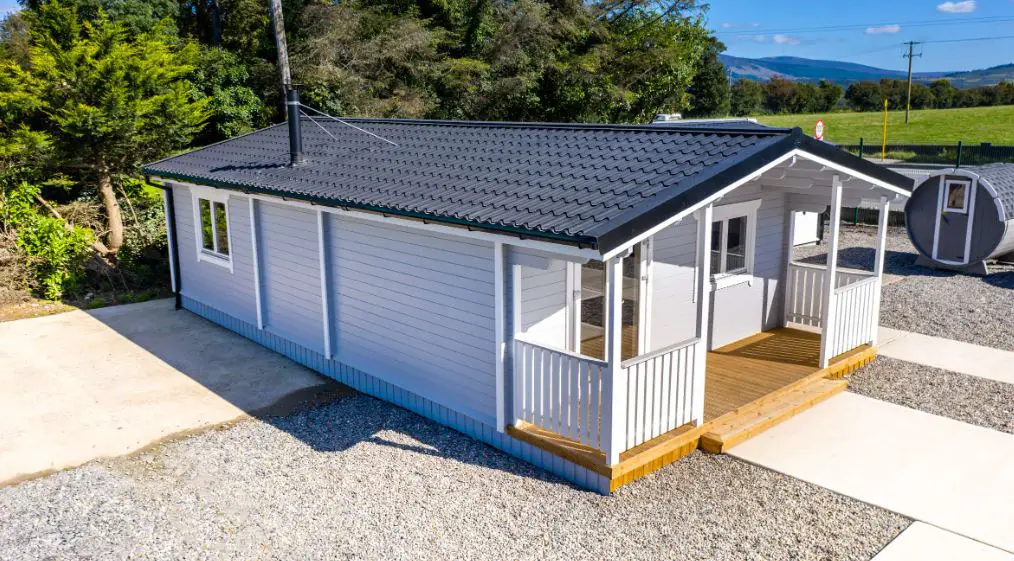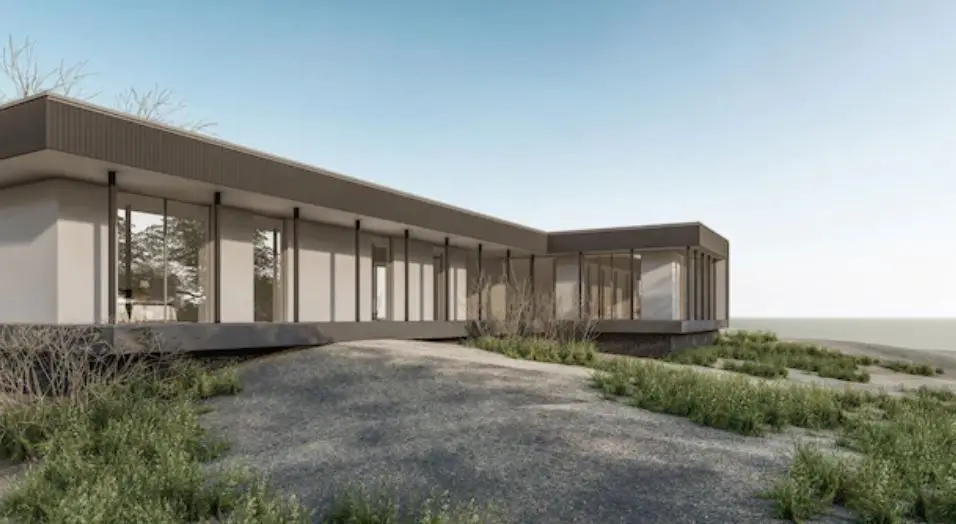The Disadvantages Of Modular Homes

Modular homes are a trend that has been steadily growing more popular in home design over the past couple of decades.
Prefabricated homes are considered to be more environmentally friendly, more affordable and easier to construct than traditionally built homes.
While these are very good reasons to choose a modular home, it is important to also be aware of some of the less favourable aspects of these types of homes.
In this article, we will guide you through some of the pitfalls associated with modular houses, to help make sure you can make an informed decision on the build type of your next home.
What are modular homes?
The term “modular” simply means to be constructed with standard dimensions.
Modular homes are simply homes built using prefabricated pieces from a factory rather than being constructed from scratch, on-site, like traditional homes.
This allows for easier assembly and flexibility in design, often works out to be much cheaper than buying building materials and comes with the reassurance of rigorous factory quality control.
Here is a video detailing the process of building and assembling a modular home from start to finish.
BuildGreenNh differentiates between 26 different types of prefabricated homes of which modular homes are one.
These can come in a variety of standard designs, but can also be highly customized according to your wants and needs.
Most modular homes make use of timber panels and steel frames, pre-equipped with all the required electrical and plumbing components, but they can be crafted from different materials.
Because of this flexibility in design, modular homes can vary and be used for any purpose, from sheds to homes to office blocks, modular homes can be adapted to be used as any type of building.
That said, there are also several difficulties associated with modular homes. It is important to be aware of these along with all the positive aspects of this building style.
Some of the difficulties, like zoning permissions, finding the land and relying on contractors and suppliers are shared with conventionally constructed homes.
Others, however, are unique to modular homes and often caused by the very qualities that allow for some of the advantages of modular homes.
So picking the best building style is a trade-off between advantages and disadvantages and it’ll be up to you to decide which works best for your circumstances.
Some of these uniquely modular issues include logistical problems, modification limitations, financing difficulties, safety deficiencies, relatively shorter lifespans and even social stigmas.
We will be exploring all of these in detail to help you make an informed decision.
Disadvantages of modular homes

Finding the land
Before you can construct your modular home, you will need to find a vacant plot that is suitable for this type of build.
Although this is true of any build, we recommend having the contractor that you want to assemble your house have a look at the land before you order the manufacturing of your home.
Legal issues
Once you have found a suitable piece of land, you will have to make sure it complies with all zoning regulations and building codes of the area that you are in.
These differ between states and countries, so it is worth hiring a professional to ensure your paperwork is in order.
Financing difficulties
While modular homes are famed for being quite a lot cheaper than traditionally built homes, they are often also harder to finance.
Banks are unwilling to extend the same type of mortgage loan on a modular house as they are for a regular home. T
his is due to a number of reasons, but mainly because they know that the resale value of a modular house does not compare with traditional homes and that it is therefore more of a risk to finance it as an asset.
Unforeseen costs
One of the biggest issues people find when erecting a modular house is that, while it is much cheaper than building a normal house, there often seem to be many unforeseen costs.
This is only a problem if you do not do adequate research before starting your build. Many make the mistake of finding out how much a modular home would cost and setting their budget according to that only.
Upnest.com predicts that you may double your predicted expenditure on elements like land preparation, the foundation, the permits, the utility connections, and other miscellaneous costs
Logistical problems and risks
The “modules” that form your home need to be transported to the eventual location from the factory.
Though there are measures to take to insure the material for any damage that may be incurred during the trip, remote locations may be completely unattainable and your schedule will inevitably be at the mercy of the journey from the factory to your yard.
Reliance on manufacturers
You have much less input in the building process of your home and have to trust in the capabilities of your manufacturer.
So it’s important to make sure you do your due diligence when deciding who to entrust with manufacturing your home.
Quality assurance difficulties
While some might argue that you can be at peace knowing that the quality assurance standards of a factory should be sufficient, many homeowners prefer to monitor the building process, ensuring everything meets their standards as the build continues.
With modular homes, by the time the modules arrive at the location, most of the work has already been completed.
Modification restrictions
While modular homes are flexible in design, any changes you want to make after the manufacturing process has begun will be difficult to implement.
The modules are designed to fit in with each other perfectly, each reliant on the different pieces next to it. So it’s not as easy as simply knocking down a wall.
Make sure you are completely happy with your design before manufacturing begins.
Shorter lifespan
The build quality, materials used and location climate will all play a role in the lifespan of your modular home.
According to Erin Shrine, founder of Attainable Home, modular homes tend to survive for between 30 and 100 years. Most estimations, however, predict about 50 years of use from a modular home.
That may sound like a lifetime, but compared to the generational value of conventional homes, this is actually quite short.
Consequently, the resale value of modular homes isn’t great, which in turn also affects the financing options available.
Insulation challenges
Depending on which materials you make use of to build your home, modular homes tend to be quite cold and inefficient at retaining heat.
This will be more of a problem in some climates than in others, and there are many conventional methods of remedying this fact.
Still, it is important to know that since most modular homes are built using timber, timber is not known for keeping heat.
Piotr Goławski spoke to Medium.com about his experience living in a modular home, saying “Timber houses are much lighter than masonry houses, so they do not keep warm and cool down quickly. This is a big drawback.
Most central heating installations operate during the day and are switched off at night. In a modular timber house, we can’t afford it.
In the event of any interruption in the heating operation, the house will get really cold.”
Complicated to repair
Because of the interconnectivity of the prefabricated sections, repairs can often mean needing to remove an entire panel or section.
This can make what would normally be considered simple repairs end up being quite complicated.
If your manufacturer does not offer repairs it’s up to you to find a tradesperson who is knowledgeable about modular repairs to help you restore your home.
Public stigmas
Although this is changing rapidly, there are a number of public stigmas surrounding modular homes. Some are valid, others will pass as people become more educated about this building style.
For instance, people associate modular homes with poverty or low quality because they are cheaper than traditional homes. This is incorrect and unfounded. Some modular homes are of extremely high quality and look beautiful.
Others might argue that modular homes are a bad investment because their lifespan is much shorter, this is a valid concern.
But every homeowner’s situation and requirements are different, so it is important to consider the facts for yourself and ultimately make your own decision of whether this is the right kind of build for you.
FAQs

How long does a modular home usually last?
A couple of decades. Most estimations predict modular homes to last for between 30 and 50 years, though they may survive even longer depending on the quality of the manufacturer, the materials and the climate.
What is not included in a modular home?
It is important to speak to your manufacturer to ensure that you have absolute clarity on what is and is not included in the manufacturing price of your modular home.
Generally speaking, when buying a modular home you do not receive any foundational work, utility hookups or free-standing furniture. The modular home consists of sections that make up the walls and roof of your house.
This includes wiring for electricity and pipes for plumbing, though these still need to be connected to your municipal provider.
What questions should I ask a manufacturer?
Here is a list of questions compiled by Century Home Builders to help you make sure you gather all the necessary information before committing to a manufacturer.
Please note that this is not intended to be a comprehensive list, but rather just a baseline from which you can expand. It’s important to make sure you find out about all possible costs, potential difficulties, warranty declarations and anything else you are not sure about.
Is a modular home a good idea?
A modular home is a perfectly good option. Whether or not it is a good idea for you depends entirely on your circumstances and needs.
What is the difference between modular and prefab homes?
Prefabricated homes are any homes where the elements which are assembled to create the home are created in a factory before being assembled on-site.
Modular homes are homes which are created by assembling prefabricated pieces. All modular homes are prefab, but not all prefab homes are modular.
What is the difference between modular and manufactured homes?
Both modular and manufactured homes are types of prefabricated homes.
The difference between them, according to Carey Chesney of Rocket Mortage is that modular homes, which can be assembled and fixed on the property, and manufactured homes, which need to be mobile, are the codes and regulations they need to comply with.
Are modular homes safe in a tornado?
According to a report by the Federal Emergency Management Association in 2021, modular homes in Florida were found to be at least as safe, if not even safer because of the quality of their manufacturing, as traditional homes.
As long as they comply with the building codes and regulations which exist to ensure buildings comply with the necessary safety measurements that need to be taken in the area.
What is the difference between a double-wide and a modular home?
Double-wide homes receive their name from the fact that they are usually constructed on two large steel frame trailers of equal dimensions.
Modular homes are set on a permanent foundation and are therefore not mobile, but more stable.
Conclusion

The aim of this article is not to discourage anyone from choosing modular for their next home.
We simply hope to assist readers in making informed decisions. Although there are many attractive qualities to modular homes, it’s important to be aware of some of the challenges that accompany them.
Modular homes are an environmentally friendly, affordable and quick option when it comes to building a new house.
However, often finding suitable land and complying with all necessary construction codes can be difficult.
There are also always some unexpected costs for which you need to be prepared, costs which you may need to be able to pay without assistance from the bank.
Once you’ve traversed all these obstacles, and you finally begin with your home, you are locked in on the design and need to remember that it will be extremely challenging to change or repair anything after that point.
Now that you have the information you can begin the process of making a decision. Think about what you want in a home and think about what you don’t want.
Remember to gather as much information as possible and ask questions of any contractor, builder, designer or manufacturer involved.
If you’ve decided on the elements of a home that are important to you, and you compare that with the advantages and disadvantages of the building methods available, hopefully, you’ll be able to build your dream home soon!



